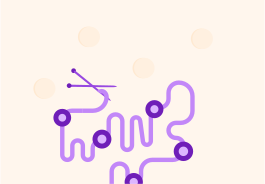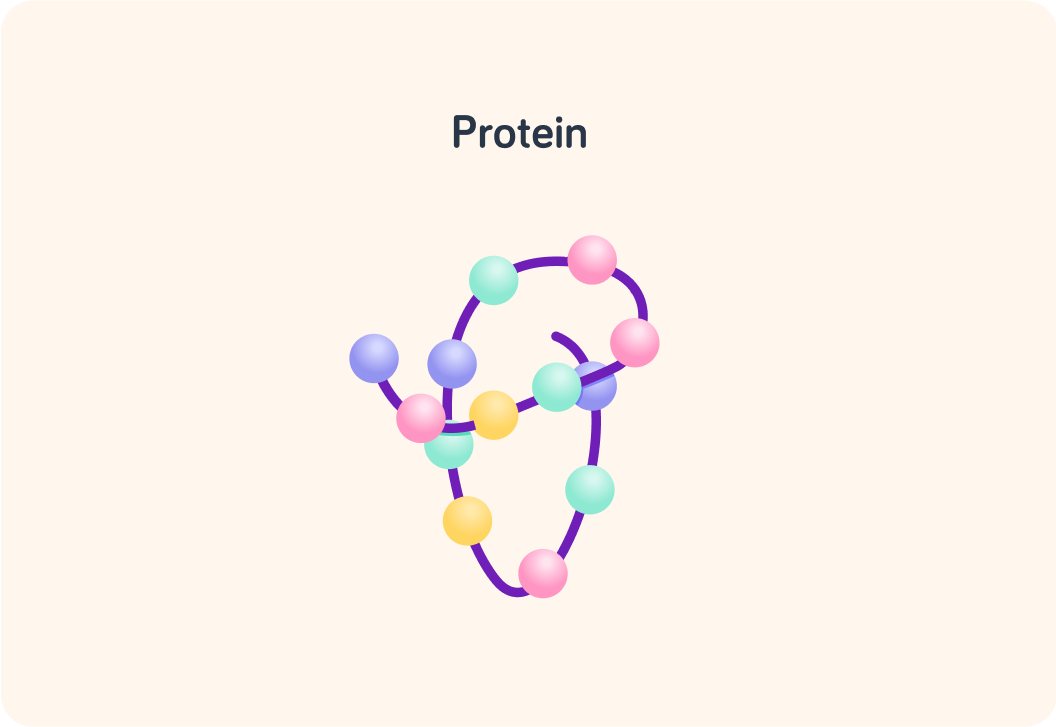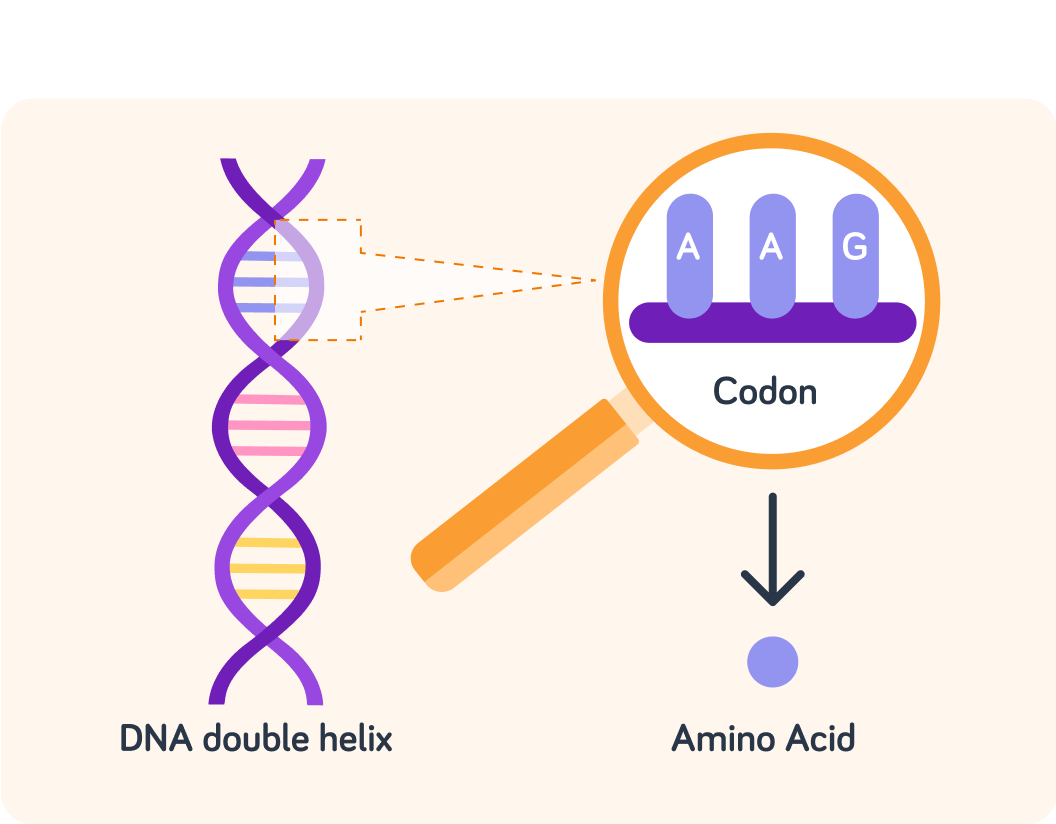YOU ARE LEARNING:
DNA to Proteins

DNA to Proteins
The specific order of bases in a section of DNA codes for the order of amino acids in the protein, ultimately deciding the final structure.
The DNA in your cells essentially codes for a whole bunch of different proteins that ultimately make you you. What might these proteins be? Pick all the options you think are correct.

You can select multiple answers
We can think of DNA a bit like a recipe book for how to make these proteins. So what role does DNA really play?

There are two steps to making proteins from the "DNA recipe book".
Transcription
This phase takes place inside the cell nucleus. The body essentially makes a copy of the DNA strand it needs to make a certain protein.
Translation
This phase takes place in the ribosomes. The copy of DNA is translated so that an actual protein is produced.
More detail on these two steps in later lessons
This lesson will simply focus on which parts of DNA get translated into the building blocks of proteins.
What are the building blocks of proteins?

Proteins are made up of amino acids. So to be able to make proteins there must be something in DNA that instructs which amino acids to produce for a specific protein.
This is an image of a section of DNA. What are the things in the middle that bind the two strands in the double helix together?
A) Bases B) Sugars C) Phosphate groups


The bases sit in codons or "triplets". How many bases are in each codon?


A codon is like a tiny recipe. What do you think it's a recipe for?
A) An amino acid B) A protein


So each codon (or "triplet" of bases) codes for a particular amino acid, which is the "ingredients" for a protein
But a recipe doesn't just tell you which ingredients to use. It also tells you how to combine them.

These are examples of codons ("triplets")
They consist of different bases:
Adenine (A) Thymine (T) Cytosine (C) Guanine (G)

Do you think AAG and CTA code for the same amino acid? Answer yes or no.


Do you think AAG and AGA necessarily code for the same amino acid? Answer yes or no.


It's not just the kind of bases in the codon that matters for which amino acid the codon codes for
The order of the bases also matters.

However! There are 64 possible codons, but there are only 20 different amino acids. What do you think that means?
A) Some codons must be faulty (like "dud codons"). B) Some codons can turn out any amino acid (like "joker codons"). C) Some codons code for the same amino acids.


So there are some codons that code for the same amino acids even though they don't have exactly the same bases in exactly the same order
For example, the amino acid lysine can be coded for by both TTT and TTC.

These are two sequences of codons
Each letter stands for a particular base.

How many of the same amino acids will these two sequences produce?


So both sequences will produce the same amino acids. Do you think these two sequences will also produce the same protein? Answer yes or no.


The two sequences of codons will not produce the same protein
Sure, they produce the same amino acids, but the order of the amino acids also matters. The order of the codons is different between the two sequences.

In summary! DNA hold the recipe for making different proteins
Proteins are an extremely diverse group of molecules that are vital for many bodily functions. For example, they can be enzymes, hormones or antibodies.

The building blocks of proteins are amino acids
It is the codons (or "triplets") in DNA that code for amino acids.

Both the kind of bases and the order of bases in the codon matters for which amino acid is produced
However, there are 64 possible codons and only 20 amino acids, so some codons code for the same amino acids.

Amino acids join together in a long chain to form a protein
Bit it's not enough that the protein has the right amino acids. The amino acids also have to be joined up in the correct order, so the order of the codons in the DNA also matters for the kind of protein that gets produced.

Actually one more thing has to happen for the protein to be done
The long chain of amino acids has to fold itself up. Each protein has a very particular shape. If the shape is off, the protein won't work.

